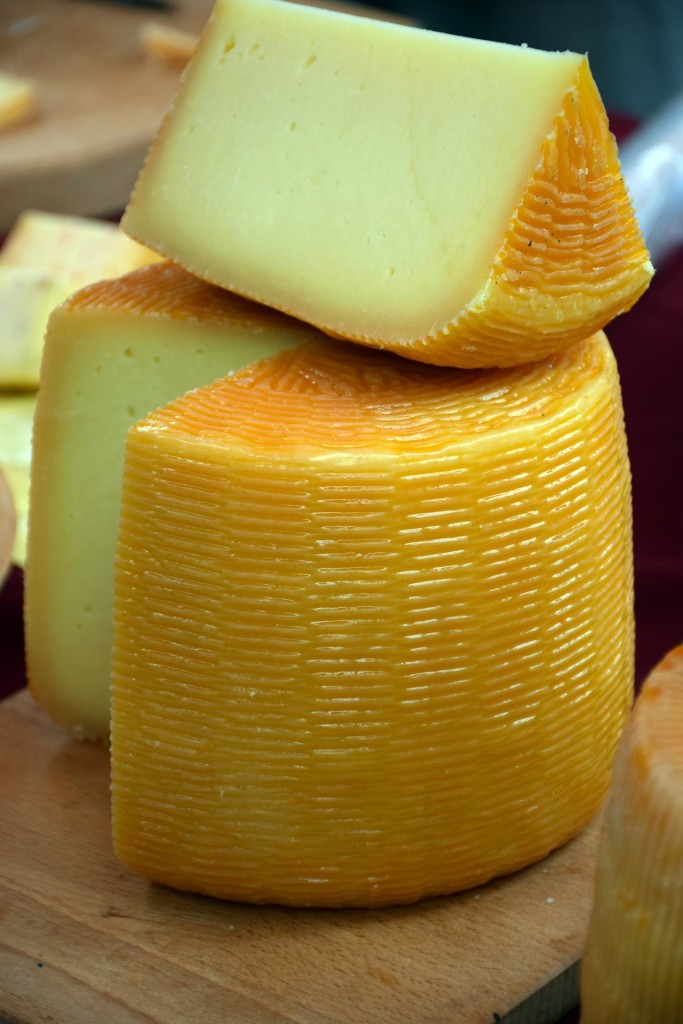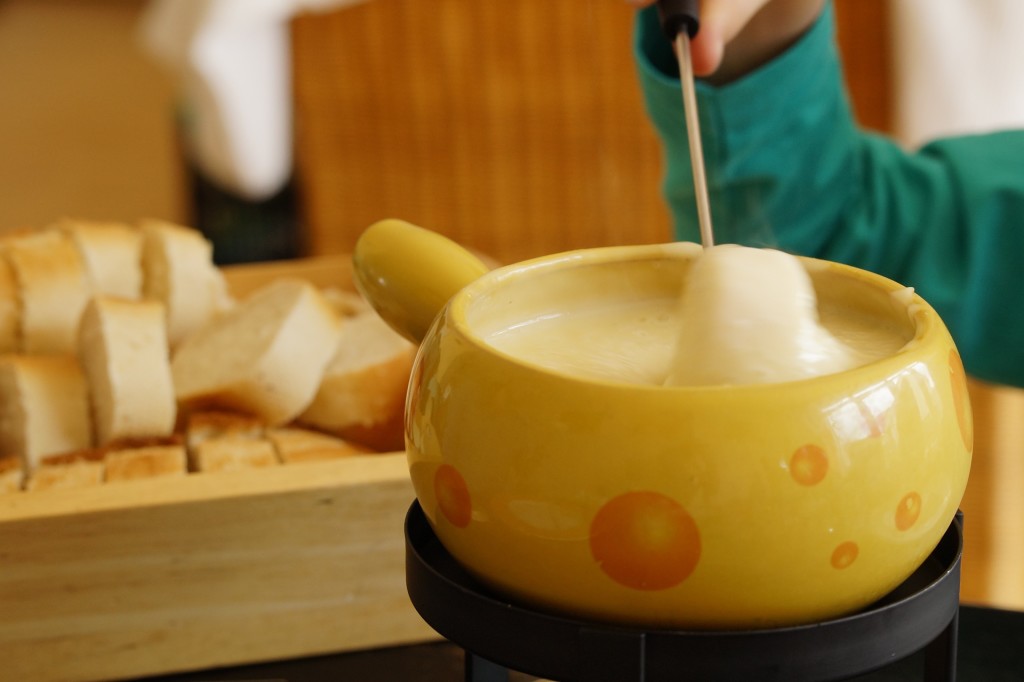 The title of this post was originally uttered to reassure my father, furious he’d just shelled out about $25 to $30 for each of us to eat—no, nibble—on a scantly portioned dinner at a fondue restaurant in a little town bordering Lake Tahoe.
The title of this post was originally uttered to reassure my father, furious he’d just shelled out about $25 to $30 for each of us to eat—no, nibble—on a scantly portioned dinner at a fondue restaurant in a little town bordering Lake Tahoe.
“Fondue is fun,” my alternate mother chimed in, happily, in response to his irritation.
First off, my dad is not a stingy guy. I would not put it past the man who just took pasta cooking classes in the Italian countryside to shell out a few for a fine dining experience. He is, after all, this founding foodie’s father. (You didn’t think I got this raving desire for delectable things out of thin air, did you?!) But there’s another family trait that burns stronger yet: We are nothing if not a value-driven family.
It makes me crazy when I buy something and it falls apart after just a few uses. Take my new yoga pants for example. Frayed at the seam after having been worn only twice. Or my new Soma bra that has an underwire poking the crap out of my armpit after the same number of uses. Most people would just c‘est la vie this stuff right into the Goodwill pile. I take them back.
In fact, in my circle of friends, I am kind of know for this. Pals will call me to ask if I can help them return some not so built-to-last thing that always seems to break less than 24 hours post-viable return period. Sometimes it works… sometimes not. But my theory is that it never hurts to try.
But what do you do about restaurant bad service? Or worse, a terrible meal?
Sulk.
It sometimes feels like we have no recourse. Have you ever complained to restaurant management about something going wrong at your table? (I raise my hand, unashamedly.) And what has been the result?
For me, they vary widely. I find chain restaurants just shrug it off. You’re lucky if they offer you free dessert. But on occasion, something amazing happens. Like the time I was sent a $100 coupon to one of our favorite places to make up for a string of bad service. That’s the kind of place I go back to.
Any I think writing reviews is important… when things go wrong, but also when they go right. Can you imagine working in a place where you never got feedback that wasn’t negative? (Sadly, my hand is shooting up again.) Nobody wants that. So give kudos where kudos are due.
And remember … fondue is fun. You are out with your family, your friends, or people you are at least willing to be seen in public with to enjoy a night out. Be thankful and enjoy yourself.
National Fondue Month
In honor of National Fondue Month, we’ll be taking a November-long look at the stuff Swedes are made of. Excuse me, I mean DREAMS. I love fondue. Never had it? Here’s a brief tutorial and history.
The earliest record of fondue dates back to around 800 to 725 BC. Within the pages of Homer’s Iliad is the description of a dish which contains goat cheese, wine and flour.
In the late 17th century, the Swiss cookbook Kochbuch der Anna Margaretha Gessner, contained a recipe for what 18th century Swiss families living in remote villages considered a staple. With little access to fresh foods in winter, they used aged cheeses and bread to feed their families. The problem was, the more aged, the harder they became, and thus more difficult to eat. If cheese was heated, however, and combined with wine, garlic and other herbs, stale bread could be dipped in to be softened and (deliciously, in my opinion) consumed. Fast forward to the 1930s when fondue was formally popularized after the the Schweizerische Käseunion (a.k.a. the Swiss Cheese Union, a.k.a. the cheese cartel … yes, it is really believed a conspiracy) named it the country’s national dish.
But there are other types of fondue, including cooking meats and vegetables in oil or broth. The origin of meat Fondue, or Fondue Bourguignonne, hails to the Middle Ages in the French region of Burgundy, where vineyard workers in the fields all day would boil a pot of oil to cook pieces of meat. We owe the French for modern cheese fondue as well, the ooey gooey melted stuff mixed with wine and served over an open flame. That dates to the late 1800s and originated near the Geneva border in the French Rhône-Alpes.
Let’s not forget Asia! Fondue Court Bouillon, a lighter version of meat fondue, originated there. The liquid used to cook in this style of fondue is broth. Don’t let me get started on chocolate fondue, which must have been born in America, where all naughty things come from.
So grab a pot and melt some Gruyere… this is just starting to get good!




